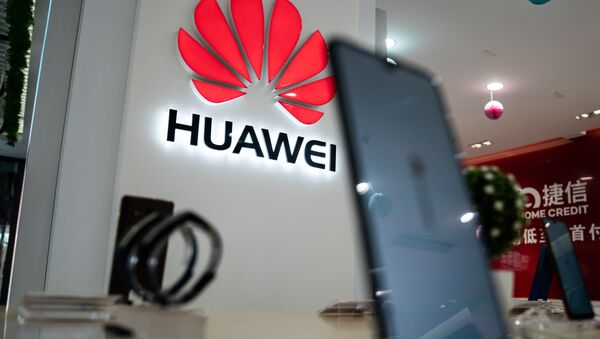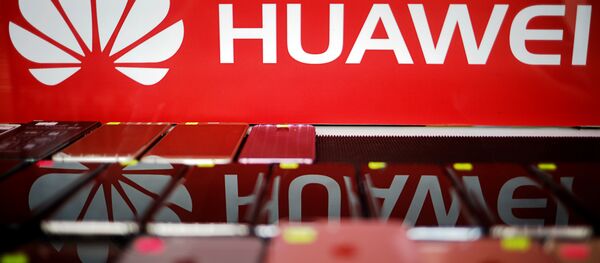Huawei's meteoric rise as the world's second largest mobile phone company in 2019, according to an IDC report, prompted the American leader to accuse the Chinese tech giant of posing threats to "national security" and to enact an executive order blanket banning the telecoms giant in the US.
Despite Huawei's innovative 5G rollout, leading technologies and competitive prices, consumer fears over losing access to critical Android updates and popular apps at the Play Store have put off retailers from selling the devices, as well as customers buying them.
For Huawei users' questions regarding our steps to comply w/ the recent US government actions: We assure you while we are complying with all US gov't requirements, services like Google Play & security from Google Play Protect will keep functioning on your existing Huawei device.
— Android (@Android) May 20, 2019
Hongmeng OS will also cover all Huawei devices, including computers, mobiles, smart devices, and others, in the event Microsoft and Google proceed with Trump's tech ban.
But the average consumer can take a few steps to future-proof their current Huawei devices to continue enjoying access to system updates and popular apps as the 'Sturm und Drang' US-China trade war intensifies.
EASY: Use Third-Party App Stores
The easiest way to circumvent the Google Play ban is to download a third party app store such as Aptoide, F-Droid, APKPure or APK Mirror, which will provide automatic app updates and access the same library as Google Play, even those restricted by location or not offered on the Play Store..
Simply download the store app from their website and install on your mobile, as well as updating security permissions to install apps from unknown sources.
MEDIUM: Use a Custom ROM
Whilst the Android licence ban does not come into effect until 19 August, more tech-savvy users can either wait until Huawei launches its Hongmeng OS or experiment with custom ROMS: third-party operating systems based using Android's open-source code maintained by teams or the global community.
Custom ROMs offer great customisation options and will receive updates released by the provider, usually over-the-air (OTA) via WiFi and mobile data when needed, or by downloading updates and installing them using recoveries.
Huawei phones are now really cheap because of the whole "no business with US companies" situation
— theMikanik (@mikonunyez) May 26, 2019
I'll just buy a P30, flash a custom ROM on it.
Excellent phone for cheap price, and regular Android updates that way.
Life hacks.
Custom ROMs can also remove unnecessary apps (bloatware) that users cannot uninstall without getting access to root permissions (unlocking or rooting) on their devices, and while rooting mobiles can void phone warranties, it is completely reversable by re-installing the provider's stock ROM.
READ MORE: Huawei: China Prepares Law That May Ban US Tech Firms From Its Market − Report
According to XDA Developers, the top five custom ROMs are Lineage OS (formerly CyanogenMod), OmniRom, Paranoid Android, Resurrection Remix, and Pixel Experience. These ROMs are known for their reliability and are maintained by a professional team of developers issuing timely updates.
I wish Huawei will market themselves as "Flashaholic's Phones" by shipping no ROMs in their phones and be friendly to the custom ROM community so we get to use something like Lineage OS and OpenGApps:P
— Jane Manchun Wong (@wongmjane) May 19, 2019
(I know this is far fetched but here's my fantasy)https://t.co/33ko7fJpXx
Check to see if your device is listed by clicking Settings —> About Phone —> Model Number on your device. Once confirmed, follow the installation instructions provided at the ROMs website.
(Somewhat) DIFFICULT: Downloading Windows Updates Manually
Microsoft has declined to comment on whether it would take similar actions as Google, allowing Matebook computer users to continue downloading critical Windows updates. But for those worried about future knock-on effects of the US-China trade war, there are workarounds.
Should a further ban extend to Windows, users may need to install updates manually instead of OTA.
READ MORE: Owner of Chinese Video Sharing App TikTok Developing Own Smartphone — Reports
Simply go to Microsoft's support page, find the number corresponding to the cumulative update beginning with KBxxxxxxx (in our case, KB4474419 which is the 14 May release) and download the file at the Microsoft Update Catalogue. Full instructions on installing cumulative updates can be found here. That is, unless Windows fully embraces the power of Linux.
Like A Boss: Customising Computer with Linux Partition
In the worst-case scenario, Microsoft would ban Huawei devices from accessing Windows updates, which may prompt users to ditch the US operating system duopoly of Microsoft and Apple by moving to Linux.
Completely open source, free, and fully customisable, Linux comes in several distros (versions) that range from user-friendly versions such as Linux Mint and Ubuntu to more complex distros like Arch Linux and Red Hat.
I will happily install #Linux on any #Huawei laptops that require it! pic.twitter.com/SObjntyYmH
— Brian Linuxing 🇮🇪 🇪🇺 (@BrianLinuxing) May 21, 2019
Mint and Ubuntu are by far the most popular distros, which are very similar to Windows and macOS, respectively, and users can download a catalogue of open-source apps for music, video editing, word-processing and others, completely free of charge.
Linux also allows some Windows programmes to run via Wine, Winetricks, or PlayOnLinux, and Virtual machines such as VirtualBox will allow you to run Linux with Windows simultaneously.
I bought the Huawei Matebook 13 a few months ago, looks like it will be a Linux machine soon
— {CI4R} ʟᴇɪɢʜ ᴀᴋɪɴ (@CI4R_) May 26, 2019
READ MORE: Huawei CEO Sure US Crackdown Not ‘Powerful Enough’ for Everyone to Follow
But Linux requires knowledge of Terminal and some Windows and Mac programmes may not work, which may put off some from installing it. However, there is a great support base for Linux and a quick search online will reveal solutions to even the most complex questions, making the two distros excellent alternatives for Windows and macOS. The best part is that users will always have access to updates — anywhere and anytime.



